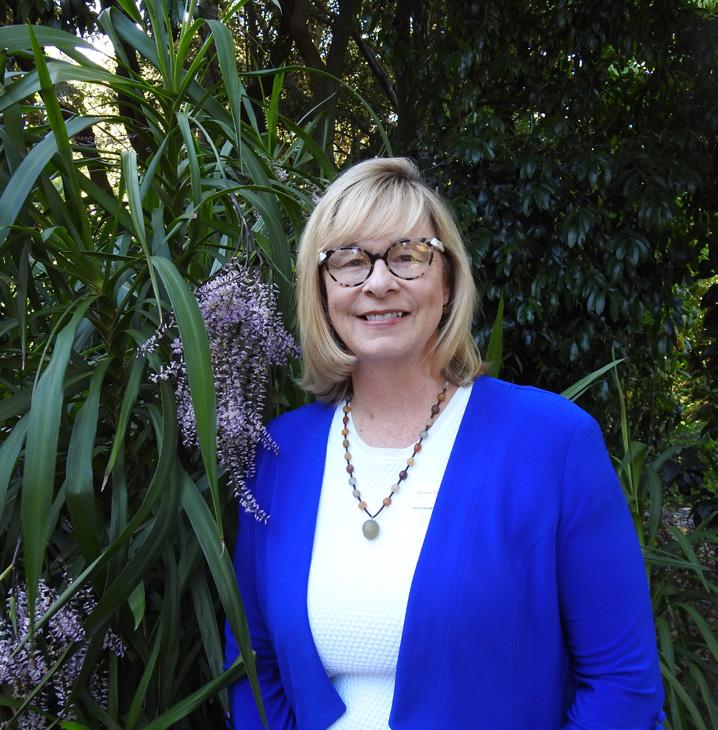
4 minute read
First Person
DR HERVÉ SAUQUET
A DISCOVERY AT UNIVERSITY SET HERVÉ SAUQUET ON A JOURNEY TO PURSUE CUTTING-EDGE RESEARCH AND ESTABLISH A NEW LIFE
Advertisement
Growing up in suburban Paris, I had absolutely no interest in plants, though I was always attracted to science. I remember my father buying me a small press to encourage me to dry leaves, and thinking this would be an awfully boring thing to do. I wanted to become a palaeontologist, then an astrophysicist, then a marine biologist (inspired by the exotic documentaries of Jacques Cousteau). I actually fell into biology by accident after graduating from high school, where I was far more attracted to mathematics and other “hard” sciences. But then I had a few defining moments which shaped the rest of my adult life.
First, I became fascinated by biology as soon as I had to study it intensively in a “classe préparatoire” (a uniquely French parallel pathway to university curricula), in part thanks to an exceptional teacher. When I attended my first floristic practical and was told that we would dissect flowers all day to learn to identify them, I thought that was a ridiculous thing to do, but I became instantly hooked. By the end of my third year of college I realised what I wanted to do.
FINDING MY NICHE I attended a class on evolution, specifically phylogenetics, and found out that this was an area of active research. This was in 1997. At that time, morphological data were still the primary source to reconstruct phylogenies (although DNA sequencing was quickly rising as an alternate option) and this is what I wanted to do. The first person I met at the Paris Herbarium told me that phylogenetics was interesting, but first it was urgent to finish describing all the undocumented species on the planet, which I was not happy to hear. But he did point me to an older colleague, Annick Le Thomas, who had started to work on plant phylogenetics with an American francophile colleague, James Doyle. Annick and Jim turned out to be incredible, unique and very different mentors and supervisors, who followed me from my Master’s to the end of my PhD, which aimed at reconstructing the phylogeny of Myristicaceae (the nutmeg family). They hooked me on magnoliids and the mystery of the origin of flowering plants, but most importantly they were role models in independent and (very) critical thinking who still inspire me today.
A NEW PLACE TO CALL HOME As a postdoc in Stockholm, working on fossil pollen of Proteaceae with David Cantrill (now Director of Science at the Royal Botanic Gardens Victoria), I visited Sydney to meet Peter Weston, arguably the world’s expert on Proteaceae. Peter was exceptionally welcoming and took me to the Royal National Park to meet my first living plants after six months working on their fossil record (there are no Proteaceae in Sweden). Two years later, I came back as a postdoc and this is when I fell in love with Sydney. I left in 2007, spent another postdoc year in London at the Royal Botanic Garden, Kew, and then moved back to Paris to live with my partner Matthew (from Chicago), whom I also accidentally became hooked to during those years. I took a position as Assistant Professor at Université Paris-Sud, applied for and (five years later) obtained permanent residency in Australia, and eventually moved back here in 2017 with Matthew after securing a new permanent role as Systematic Botanist.
I am loving my life in Sydney, the incredible flora and outdoor opportunities (running along the Pacific Ocean is more fun than the Seine), and the many wonderful staff and friends at the Gardens. My current role is a great chance for me to spend more time on research and collections, and less on teaching, although I sometimes struggle to make sense of all the government rules and restrictions.
My research focuses on flowering plant evolution where one of my specialties is to use (now DNA-based) phylogenetic trees to understand how flower structure has evolved through deep time (the eFLOWER project I started 10 years ago) and another is to combine phylogenetic and fossil evidence to reconstruct the timing of divergences throughout flowering plant diversification, working closely with partners in Vienna and Mexico City. I also continue to have a strong interest and several ongoing projects on magnoliids and Proteaceae, and am involved in many other exciting collaborations worldwide and nationally, such as our ongoing effort to reconstruct the Australian Angiosperm Tree of Life (AAToL) through the Genomics for Australian Plants (GAP) initiative.
Although this is all quite different from my naive aspirations as a child, I am happy to collaborate with many paleontologists through my research and check out the marine life as a hobby at every chance from our new home in Clovelly.










